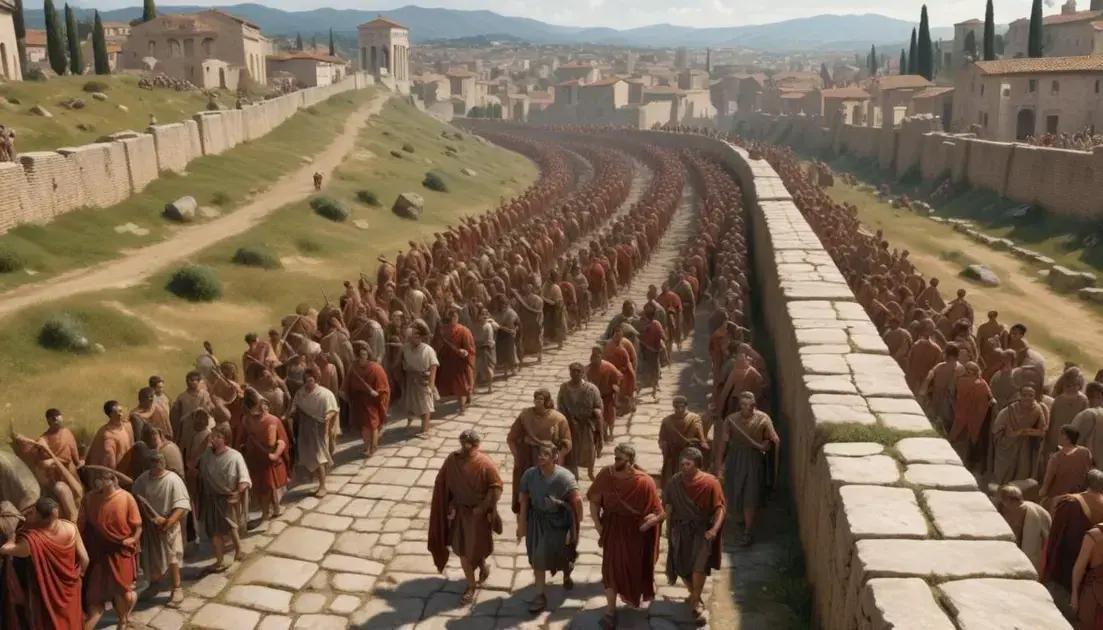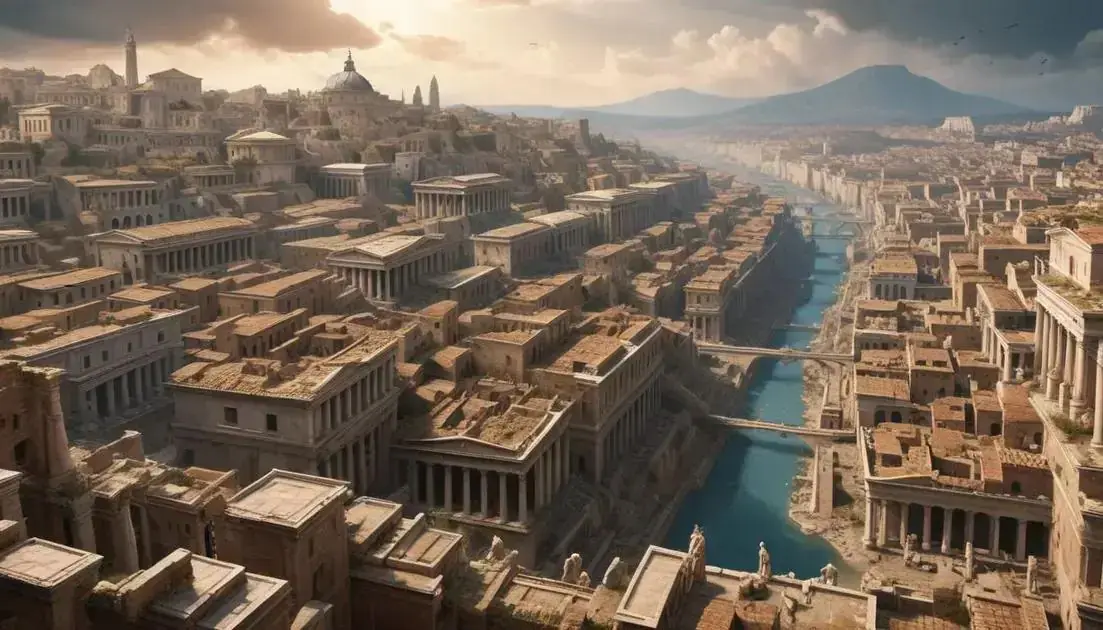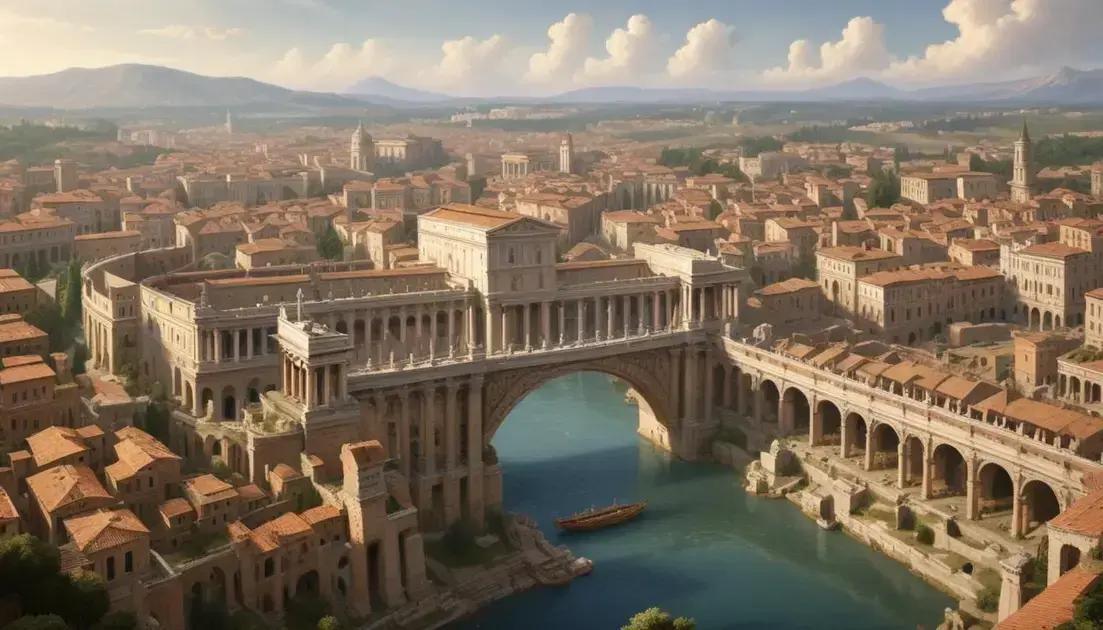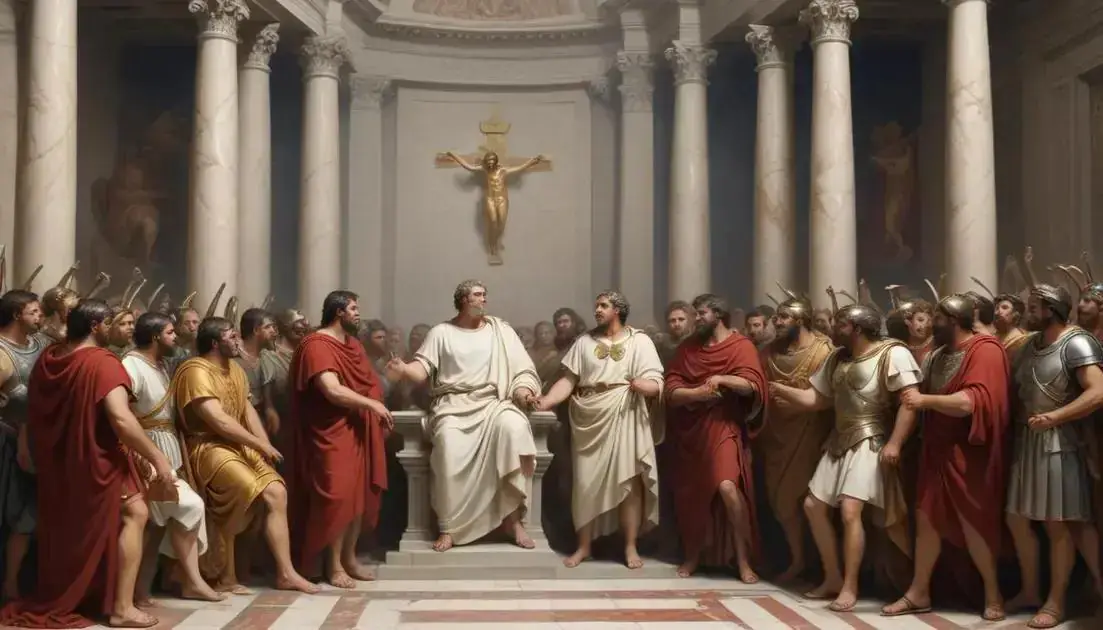
Roads, Pax Romana and the Spread of Christianity
The Pax Romana significantly influenced the spread of Christianity by ensuring peace and safety, which allowed missionaries to travel freely. Figures like Saint Paul and Saint Peter played key roles in sharing Christian teachings across diverse cultures. This cultural exchange enriched societies, blending local traditions with Christian practices, and leaving a lasting legacy on art, education, and language. The impact of these early missionary efforts is still evident in modern culture, as they helped create a unique interconnectedness among different peoples.
Ever wonder how the Pax Romana shaped the early days of Christianity? With the vast network of roads facilitating travel, missionaries spread their message far and wide.
Imperial Roads and Their Design
The imperial roads of ancient Rome were crucial for connecting the vast empire. These roads were designed to be straight, durable, and efficient. Each road served a clear purpose, whether for trade, military, or travel.
Construction Techniques
Roman engineers used a mix of gravel, stone, and concrete to build these roads. They often placed larger stones on the bottom for support and smaller stones on the top. This layering made the roads sturdy and long-lasting.
Layout and Planning
The layout of these roads was carefully planned. Roads often began in the center of a city, spreading outwards to connect with other towns and regions. The Romans even used milestones to help travelers measure distances along the route.
Importance of Road Design
Good road design made travel faster and safer. Soldiers could move quickly to respond to threats, which helped maintain peace and order. Merchants also benefited because improved roads meant goods could be transported more easily.
Examples of Famous Roads
One famous road, the Appian Way, linked Rome with the southern parts of Italy. It was known for its solid construction and beautiful views. Many travelers still admire this ancient route today.
Overall, the design of imperial roads played a vital role in the effectiveness of the Roman Empire’s administration and military. They not only connected cities but also united cultures and ideas across the empire.
Impact of Pax Romana on Travel
The Pax Romana had a huge impact on travel in the Roman Empire. This period, lasting around 200 years, created peace and stability. It made it easier for people to move freely.
Safety on the Roads
With less fighting and stronger laws, travelers felt safer. Roads were maintained better, which encouraged trade and movement. Merchants could transport goods without fear.
Expansion of Trade Routes
As travel became safer, trade routes expanded. More cities connected through these routes, which helped people exchange goods and ideas. Fresh fruit from one region could be sent to another.
Role of Roman Roads
Much of this travel relied on Roman roads. These well-built paths allowed easier movement for armies and civilians. The design of roads made them a vital part of the economy.
Influence on Culture
The ease of travel also encouraged cultural exchange. People shared languages, traditions, and faiths during their journeys. This blending of cultures enriched Roman life.
Tourism and Pilgrimage
The Pax Romana led to early forms of tourism. People traveled to see famous sites, attend festivals, or go on pilgrimages. This growth in travel created vibrant communities along popular routes.
Christianity’s Expansion Across Regions
Christianity’s expansion played a big role during the Pax Romana. This peaceful time allowed religious ideas to spread across different regions. Missionaries traveled far and wide to share their beliefs.
The Role of Missionaries
These early missionaries were brave. They faced challenges but kept traveling. They told people about the teachings of Jesus and formed communities of believers.
Using Roads for Travel
Roman roads made the journey easier. Missionaries used these roads to reach new areas quickly. The network of roads helped connect different cultures.
Acceptance in Different Cultures
As Christianity spread, it found new followers in diverse cultures. Many people were drawn to its message of hope and love. They welcomed the teachings and often blended them with local traditions.
Support from Leaders
Support from local leaders further helped the spread. Some rulers accepted Christianity, making it easier for their people to join the faith. This acceptance helped build larger communities.
Impact on Society
Christianity’s spread influenced art, culture, and education. Churches became centers of learning and community life. The faith played a vital role in shaping societal values.
Historical Figures in Christian Missionary Work
Many historical figures significantly shaped Christian missionary work. These individuals played vital roles in spreading Christianity during the Pax Romana.
Saint Paul
One of the most famous missionaries is Saint Paul. He traveled widely to teach about Jesus. His letters helped form early Christian beliefs.
Saint Peter
Saint Peter, a close follower of Jesus, also spread the message. He is known for his strong leadership. He helped build the church in Rome.
Saint Patrick
In Ireland, Saint Patrick is a well-known figure. He used simple messages to teach about Christianity. His efforts greatly impacted the Irish culture.
Saint Augustine
Saint Augustine of Hippo was another influential missionary. His writings shaped Christian theology. He addressed the challenges of faith and society.
Women in Missionary Roles
Women played essential roles too. Figures like Phoebe and Lydia supported the church. Their efforts helped spread the faith in different communities.
These historical figures show how passionate individuals can impact the world. Their journeys highlight the importance of perseverance and faith in spreading Christianity.
Cultural Exchange and Its Legacy
Cultural exchange played a significant role during the spread of Christianity. As missionaries traveled, they met diverse groups. They shared beliefs, traditions, and ideas.
Blending of Traditions
As Christianity spread, it influenced local customs. Many new believers incorporated their traditions into church practices. This blending helped make Christianity more relatable.
Art and Architecture
Cultural exchange also impacted art and architecture. Churches were built using local styles and materials. This created beautiful buildings that reflected both Roman and local influences.
Language and Literature
Different languages came together as well. Early texts were translated for more people to understand. This made the teachings of Christianity accessible to many cultures.
Education and Learning
Christianity encouraged education, leading to the establishment of schools. These schools became centers for learning. They offered education that mixed faith and knowledge with local customs.
Modern Legacy
The effects of this cultural exchange are seen today. Many aspects of Western culture are rooted in this history. Music, literature, and holidays hold influences from early Christian teachings.
Conclusion
In conclusion, the impact of the Pax Romana on the spread of Christianity was profound. Peace and stability allowed for greater travel and cultural exchange. Missionaries shared their beliefs and met people from many backgrounds.
This led to a blending of traditions, influencing art, language, and education. The legacy of this cultural interaction is still visible today. Many aspects of modern Western culture are shaped by these early exchanges.
Understanding this history helps us appreciate how interconnected our world has become. The journeys of early missionaries remind us of the power of ideas to unite people across different cultures.


